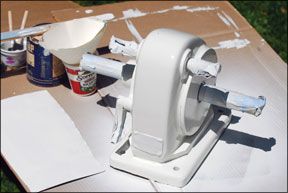Often when undertaking a major refit, we have to decide whether to try to repair an expensive piece of tired or broken equipment, or to commit it to the junkyard and buy a replacement.
If your budget is limited, making the wrong choice can quickly deplete the cruising kitty, or result in a problem you thought you’d solved to reappear months later. No one wants to waste time fixing gear that should have been replaced, or toss money at gear that should not have been replaced.
Anchor rode and Dacron sails are obvious candidates for replacement. But what about jib furlers, windlasses, and winches? Built of long-lasting metal components, these seemingly rugged mechanical devices should last forever with regular service and replacement of worn parts like bearings and pawls. In these cases, repair seems the obvious choice, especially when a new replacement is so expensive. Whats less obvious, however, is that theres a lot of salvageable mechanical equipment on boats today that simply isn’t worth saving.
There is another option. You can often find a less-expensive substitute on the used-gear market. In many cases, the equipment that is just as good as new gear, if not better than new. The trick is separating the gems from the junk.

A poster child for this sort of refit quandary is the old Simpson Lawrence manual windlass, a British-engineered oddity that has long been a source of cruising sailor ire. Commonly found on cruising boats made during the 1980s, these windlasses use a troublesome chain drive rather than a gear drive. This, along with the dissimilar metals used in its various components (cast-steel gypsy, aluminum case, etc.) make these windlasses a poor candidate for rebuilding.
Before the owner of a rusted-out Simpson Lawrence starts fretting over the money hell spend on a new manual or electric windlass, he should consider purchasing a used windlass of a better, more durable design.
As more and more older fiberglass boats reach the end of their lifespan, the well-made mechanical equipment found on these boats is making its way into used gear chandleries. Our February 2011 guide to used-gear chandleries profiled a number of retailers stocked with perfectly good or repairable equipment waiting for a second life.
In the case of the deteriorated Simpson Lawrence windlass, we would recommend instead looking for a used, manual Nilsson windlass; Nilssons were first introduced in the 1960s. While Nilsson has been out of business in the U.S. for a while, the companys used windlasses are a good find, and parts for some of its most popular models are still available. Check out secondhand chandleries, nautical flea markets, and eBay. A little tender loving care and a good check of the windlass bearings, gears, seals, and housing can turn a derelict piece of hardware into a “like new” foredeck appendage.
Often, all the windlass needs is a new finish. When painting cast-aluminum housings like the Nilssons, prep is especially important because they love to oxidize, particularly under a glossy finish coat. The key to success lies in the abrasive removal of all old paint, primer, and oxidation. Next comes a solvent wipe down, followed up with a single, very thin coat of etching primer, such as Interluxs acid etch primer 353/354. As soon as the surface dries, overcoat with Interlux 404/414 barrier coat, scuff sand, and apply two or more coats of a one- or two-part urethane topcoat such as Interlux Perfection. Spray application offers the best results, but carefully follow all safety precautions.
Of course, used gear often ends up at the flea market for a reason, and a novice buyer can easily throw away good money on used stuff, as I once did. (Some of the secondhand-gear chandleries we profiled had strict return policies.) Our article on used gear chandleries offers a general guide to secondhand equipment buying (were big fans of silicon bronze), but buying used requires doing some homework. For mechanical equipment, the availability of replacement parts is a key consideration. Fortunately, some of the most beloved marine products continue to have parts support, even when the product itself is no longer being manufactured.
If you have used gear success stories to tell, Id love to add them to a list we can share with other sailors. You can either comment below, or send an email to practicalsailor@belvoirpubs.com.




































